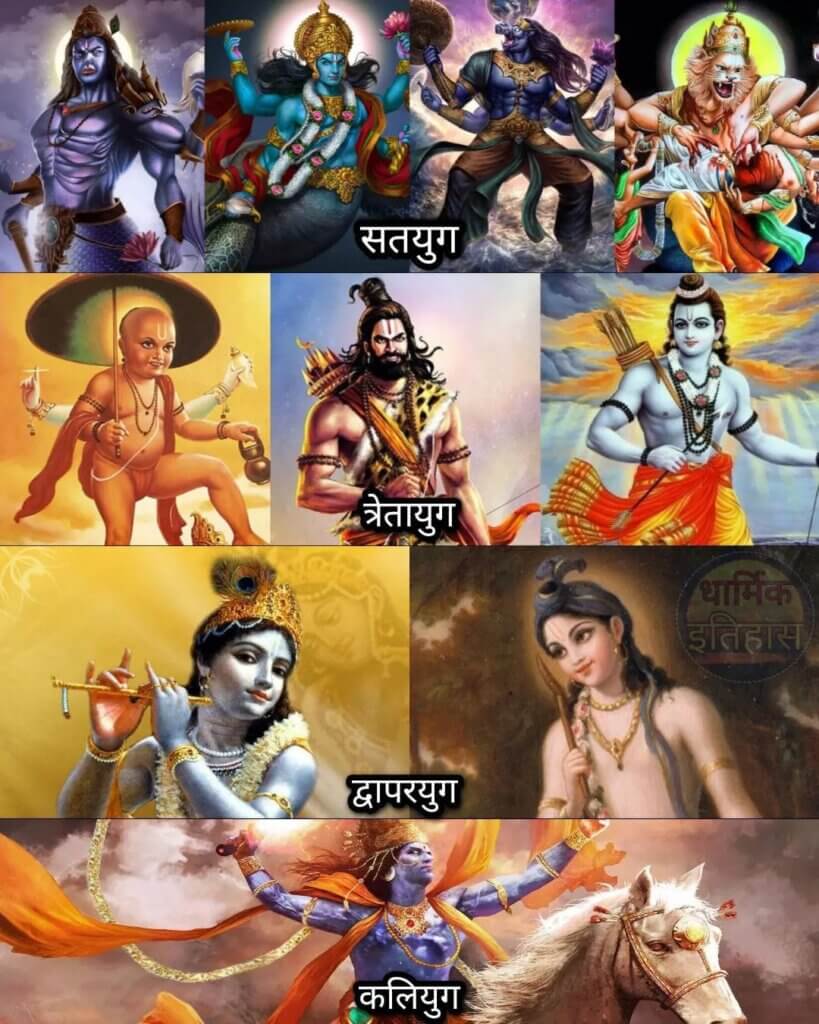10 avatar of Vishnu
Matsya to Kalki avatar : Vishnu’s 10 Avatars in Hindu Mythology
Introduction
The ten avatars of Lord Vishnu, collectively known as the Dashavatara, are of profound significance in Hinduism. They symbolize the divine descent of the Supreme Being to restore cosmic balance and uphold righteousness, or dharma. Here’s a brief overview of the significance of Vishnu’s ten avatars:
- Matsya (The Fish): Symbolizing preservation, Matsya saved the ancient scriptures and the sage Manu during a great deluge, emphasizing the importance of knowledge and protection (10 avatar of Vishnu).
- Kurma (The Tortoise): Kurma supported Mount Mandara during the churning of the ocean, illustrating the idea of teamwork and the cosmic balance between gods and demons(10 avatar of Vishnu).
- Varaha (The Boar): Varaha rescued the Earth (personified as Bhudevi) from the demon Hiranyaksha, symbolizing the protection of the planet from existential threats(10 avatar of Vishnu).
- Narasimha (The Man-Lion): Narasimha appeared to protect his devotee Prahlada, showcasing the triumph of good over evil and the divine intervention in times of crisis(10 avatar of Vishnu).
- Vamana (The Dwarf): Vamana subjugated the demon king Bali, teaching humility and illustrating the principle that even the mightiest can be humbled by divine forces(10 avatar of Vishnu).
- Parashurama (The Warrior with an Axe): Parashurama eradicated corrupt Kshatriya rulers, highlighting the cyclical nature of dharma and the need for periodic corrective actions(10 avatar of Vishnu).
- Rama (The Prince of Ayodhya): Rama, the hero of the Ramayana, exemplifies ideal leadership, moral integrity, and devotion to duty(10 avatar of Vishnu).
- Krishna (The Divine Cowherd): Krishna, central to the Mahabharata, imparted the Bhagavad Gita, emphasizing duty, righteousness, and the path to spiritual realization(10 avatar of Vishnu).
- Buddha (The Enlightened One): Some traditions consider Buddha as an avatar, promoting compassion, non-violence, and enlightenment(10 avatar of Vishnu).
- Kalki (The Future Warrior): Kalki is prophesied to appear in the future, bringing an end to the current age of darkness and corruption, and ushering in a new era of righteousness(10 avatar of Vishnu).
1. Matsya Avatar – The Fish Incarnation 10 avatar of Vishnu
Matsya Avatar, or the Fish Incarnation, is one of the ten principal avatars (incarnations) of Lord Vishnu in Hinduism. According to Hindu mythology, 10 avatar of Vishnu takes various avatars to restore cosmic order (dharma) whenever there is a threat to it. The Matsya Avatar is considered the first among these avatars(10 avatar of Vishnu).

The story of Matsya Avatar(10 avatar of Vishnu) is primarily found in the Puranas, especially the Matsya Purana. The narrative goes as follows:
Once, during the Satya Yuga (the first of the four ages in Hindu cosmology), there was a king named Manu. One day, while he was performing his morning rituals, a tiny fish swam into his hands. The fish appealed to King Manu, asking for protection from larger fish in the water. Out of compassion, King Manu placed the fish in a small pot.
As the fish grew larger, King Manu had to transfer it to larger containers, ponds, and eventually rivers and oceans. However, the fish continued to grow at an astonishing rate. Sensing something extraordinary, the fish revealed its true identity as Lord Vishnu and informed King Manu about an impending catastrophic flood that would submerge the entire world.
10 avatar of Vishnu instructed King Manu to build a massive boat and take along with him the Seven Sages (Saptarishi), seeds of all plants, one of each animal species, and the sacred scriptures. When the floodwaters rose, Matsya Avatar, in the form of a giant fish, guided the boat through the deluge, ensuring the survival of life and knowledge.
Ultimately, the Matsya Avatar recovered the Vedas (sacred scriptures) that had been stolen by a demon named Hayagriva during the flood. After the floodwaters receded, Lord Vishnu restored the cosmic order and returned to his divine abode, leaving behind the teachings and knowledge necessary for the regeneration of life.
The Matsya Avatar symbolizes the concept of preservation, as Lord Vishnu takes this form to safeguard life and knowledge during a period of cosmic crisis.
-
Kurma Avatar – The Tortoise Incarnation
The Kurma avatar is one of the ten incarnations of Lord Vishnu in Hinduism. The word “Kurma” means tortoise or tortoise in Sanskrit. According to Hindu mythology, Lord Vishnu took the form of a turtle, known as Kurma, to support Mount Mandara during the upheaval of the ocean, an important event known as Samudra Manthan.
The story of Kurma Avatar(10 avatar of Vishnu) is found in several Hindu scriptures, including the Puranas. During the Samudra Manthan, the Devas (celestial beings) and Asuras (demons) came together to obtain the nectar of immortality, known as Amrita. To churn the ocean, he used Mount Mandar as a churning stick and Vasuki Naga as a churning rope.
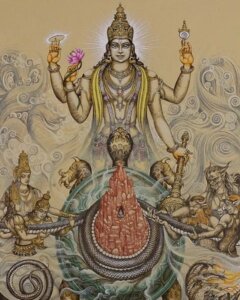
As soon as the turmoil began, the Mandarachal mountain began sinking into the sea. To avert this disaster, Lord Vishnu took the form of Kurma and rested the mountain on his back, acting as a stable base to continue the agitation. This allowed the gods and asuras to successfully churn the ocean and extract various divine treasures, including the nectar of immortality.
There are several textual and symbolic meanings associated with the Kurma avatar(10 avatar of Vishnu):
Stability and Support: Kurma avatar symbolizes stability and support in difficult times. The turtle’s unwavering support for Mount Mandara teaches the importance of a solid foundation in the face of adversity.
Teamwork: Samudra Manthan involved the cooperation of gods and demons. Highlights the importance of teamwork and collective effort to overcome obstacles and achieve common goals.
Divine Grace: The Kurma avatar reflects the divine intervention of Lord Vishnu to maintain cosmic balance. It shows that divine powers actively participate in the affairs of the universe for the general good.
Endurance: Kurma Avatar supported the weight of the mountain for a long time. He teaches the virtues of patience, perseverance, and endurance in the pursuit of higher ideals.
-
Varaha Avatar – The Boar Incarnation
Story of Varaha Avatar(10 avatar of Vishnu):
According to Hindu mythology, a demon named Hiranyaksha obtained a boon from Lord Brahma, granting him immense power. Filled with arrogance and fueled by his newfound strength, Hiranyaksha began to wreak havoc on the Earth and the heavens. He submerged the Earth into the cosmic ocean, hiding it from the gods and sages.
Unable to tolerate this act of injustice, Lord Vishnu incarnated as Varaha (the boar) to rescue the Earth and restore balance to the universe. Varaha dived into the cosmic ocean, located the Earth, and lifted it on his tusks.
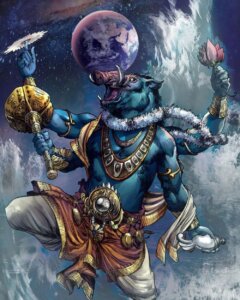
A fierce battle ensued between Varaha and Hiranyaksha in the cosmic ocean. Eventually, Varaha defeated the demon, symbolizing the triumph of good over evil and the restoration of cosmic order.
Significance of Varaha Avatar:
- Preservation of Dharma (Righteousness): Varaha avatar exemplifies Lord Vishnu’s role as the preserver of dharma. By rescuing the Earth from the clutches of Hiranyaksha, Varaha restored order and righteousness.
- Symbolism of Boar Form: The choice of the boar form holds symbolism. The boar is a powerful and resilient animal, and in this form, Vishnu displayed his strength and determination to protect the Earth(10 avatar of Vishnu).
- Cosmic Balance: The story of Varaha highlights the cyclical nature of creation, preservation, and destruction in Hindu cosmology. Vishnu’s avatars are seen as necessary interventions to maintain the cosmic balance whenever it is disturbed.
4.Devotion and Sacrifice: Bhudevi, the Earth goddess, represents humility and devotion. Varaha’s act of lifting the Earth on his tusks emphasizes the significance of sacrifice and selfless service for the greater good.
- Vedic Cosmology: The narrative of Varaha avatar is also aligned with Vedic cosmology, where the Earth is considered a vital component of the cosmic order, and its protection is crucial for the well-being of the entire universe.
The Varaha avatar is celebrated in various Hindu traditions and is a popular theme in art and literature. India the most famous one located in Udaipur, Rajasthan, known as the Varaha Temple(10 avatar of Vishnu).
-
Narasimha Avatar – The Lion-Man Incarnation
Mythical Context:
Hiranyakashipu, the demon king, had acquired a boon from Lord Brahma, which granted him protection against death from any man or beast, during day or night, inside or outside, on the ground or in the sky, using a weapon or bare-handed. Filled with arrogance and considering himself as the ultimate power, Hiranyakashipu declared himself to be the supreme ruler and demanded that everyone in his kingdom worship him instead of the gods.

However, his son Prahlada, from birth, was an ardent devotee of Lord Vishnu (10 avatar of Vishnu), much to the dismay of Hiranyakashipu. Despite various attempts by Hiranyakashipu to change Prahlada’s devotion, including subjecting him to harsh treatment and placing him in life-threatening situations, Prahlada’s unwavering faith in Lord Vishnu (10 avatar of Vishnu) remained steadfast.
The Story of Prahlada:
- Birth of Prahlada: Prahlada was born to Kayadu and Hiranyakashipu. Kayadu was a devout woman who spent her time in meditation, and Prahlada imbibed a deep devotion to Lord Vishnu from his mother’s womb.
- Prahlada’s Devotion: Despite being raised in an environment of hostility towards Lord Vishnu, Prahlada’s devotion to the deity only grew stronger. He regularly chanted the name of Vishnu and spoke of the divine even in the face of his father’s threats.
- Hiranyakashipu’s Wrath: Unable to tolerate Prahlada’s devotion to Vishnu, Hiranyakashipu subjected him to various forms of torture, including poisoning, throwing him from heights, and exposing him to deadly serpents. However, Prahlada remained unharmed through divine protection.
- Narasimha Avatar: Frustrated with Prahlada’s resilience, Hiranyakashipu asked if Vishnu (10 avatar of Vishnu) was present in a particular pillar in his palace. Prahlada fearlessly affirmed the presence of Vishnu everywhere. In response, Lord Vishnu manifested as Narasimha, a half-man, half-lion form, and emerged from the pillar.
- Victory of Good over Evil: In a fierce battle, Narasimha (10 avatar of Vishnu) defeated Hiranyakashipu at the threshold of day and night, on the threshold of the palace, placing him on his lap (neither on the ground nor in the sky), and using his sharp claws (neither a weapon nor bare-handed). Thus, the boon was nullified, and Narasimha symbolically demonstrated the victory of good (dharma) over evil (adharma).
- Blessing of Prahlada: Despite the fierce form, Narasimha was pleased with Prahlada’s devotion. Prahlada offered prayers to Narasimha, who blessed him and granted him a boon. Prahlada, in turn, asked for the welfare of his father’s soul.
-
Vamana Avatar – The Dwarf Incarnation
Story of Vamana and Bali:
King Bali, also known as Mahabali, was a powerful and virtuous demon king. Due to his virtuous deeds and penance, he had gained immense power and ruled over the three worlds. However, his growing influence began to concern the gods, particularly Lord Indra, who feared losing his position and authority.
To address the situation, Lord Vishnu incarnated as Vamana, a dwarf Brahmin, during a yajna (sacrificial ritual) conducted by King Bali. Vamana approached Bali and requested a gift of land measuring three paces. Intrigued by the modest request, Bali agreed to grant the boon.

To everyone’s surprise, Vamana (10 avatar of Vishnu), in his cosmic form, expanded to cover the entire universe in three steps. With the first step, he covered the Earth; with the second, the heavens. When there was no space left for the third step, King Bali offered his own head for Vamana to place his foot, humbly surrendering everything.
Impressed by Bali’s devotion and humility, Lord Vishnu granted him a boon to continue ruling the netherworld (Patala) and promised to protect him. Vishnu also praised Bali for his righteousness and humility.
The Vamana and Bali story is often celebrated during the festival of Onam in Kerala, where King Bali is believed to return to visit his people during the occasion. The narrative continues to be a source of inspiration for its profound teachings on devotion, humility, and the cosmic order.
-
Parashurama Avatar – The Warrior with an Axe
Story of Parashurama Avatar(10 avatar of Vishnu):
The story of Parashurama is primarily narrated in the Puranas, especially the Bhagavata Purana and the Mahabharata.

- Origin: Parashurama was born as Jamadagni’s son, who was a sage and a descendant of the sage Bhrigu. His mother was Renuka. Parashurama was given the axe (parashu) by Lord Shiva as a boon for his devotion.
- Sage Jamadagni’s Sacrifice: One day, King Kartavirya Arjuna, who ruled over the Haihaya kingdom, visited Jamadagni’s ashram. The king was impressed by the sage’s wealth and the divine cow Kamadhenu, which could provide limitless resources. Kartavirya Arjuna, driven by greed, decided to take the cow by force.
- Parashurama’s Revenge: When Parashurama learned of his father’s death at the hands of Kartavirya Arjuna, he took a vow to rid the world of oppressive Kshatriya rulers. He obtained powerful weapons from Lord Shiva, including the axe, and embarked on a mission to eliminate the tyrannical rulers.
- Destruction of Kshatriyas: Parashurama waged war against the Kshatriya rulers and defeated them in numerous battles. He is said to have cleared the earth of oppressive rulers twenty-one times. The axe became the symbol of his divine wrath(10 avatar of Vishnu).
- Return of Kamadhenu: During his journey, Parashurama retrieved the stolen Kamadhenu from Kartavirya Arjuna and returned it to the sage Jamadagni’s ashram.
- Bhishma’s Guru Dakshina: Parashurama played a significant role in the Mahabharata. He was the teacher of Bhishma, the granduncle of the Pandavas and Kauravas. Bhishma approached Parashurama seeking knowledge in arms, and Parashurama willingly taught him. Bhishma, in return, later became a key figure in the Mahabharata.
- Retirement: After fulfilling his mission, Parashurama retired to the Mahendra Mountains, where he is believed to reside in meditation. His anger was pacified, and he attained a state of tranquility.
Symbolic Significance:
- Destruction of Evil: Parashurama’s avatar symbolizes the divine intervention needed to rid the world of oppressive and corrupt rulers who deviate from the path of dharma.
- Restoration of Balance: The warrior with an axe represents the force of retribution required to restore cosmic balance when it is disrupted by the misuse of power and authority.
- Discipline and Devotion: Parashurama’s dedication to Lord Shiva and his commitment to upholding dharma showcase the importance of discipline and devotion in the pursuit of righteousness.
- Guru-Student Relationship: Parashurama’s role as Bhishma’s teacher underscores the significance of the guru-student relationship in transmitting knowledge and upholding traditions.
-
Rama Avatar – The Prince of Ayodhya
he Rama avatar is one of the most revered and well-known incarnations of Lord Vishnu in Hinduism. The story of Rama is primarily narrated in the ancient Indian epic, the Ramayana, which was composed by the sage Valmiki.
Story of Rama Avatar (10 avatar of Vishnu):
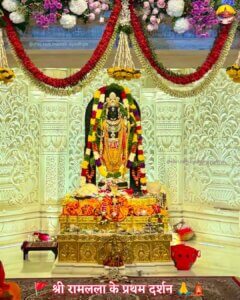
- Birth and Early Life:
– Rama was born to King Dasharatha and Queen Kaushalya in the city of Ayodhya. His birth is celebrated as Rama Navami.
– As a young prince, Rama exhibited exceptional qualities, including humility, courage, and adherence to dharma.
- Marriage to Sita:
– Rama won the hand of Princess Sita by stringing the bow of Lord Shiva, an extraordinary feat that earned him the admiration of the assembled kings and sages.
– The marriage of Rama and Sita is celebrated as an exemplary union in Hindu culture.
- Exile and Forest Life:
– Due to a promise made by King Dasharatha to Queen Kaikeyi, Rama went into exile for fourteen years, accompanied by his wife Sita and his loyal brother Lakshmana.
– During their exile, Sita was abducted by the demon king Ravana.
- Search for Sita:
– Rama, along with Lakshmana and the monkey army led by Hanuman, embarked on a quest to rescue Sita from Ravana’s captivity.
– The search for Sita is a central part of the Ramayana and is narrated in the Kishkindha Kanda and Sundara Kanda.
- War with Ravana:
– The epic culminates in a great war between Rama’s forces and the demon king Ravana’s army in Lanka.
– Rama, with the help of Hanuman and the monkey army, defeats Ravana and rescues Sita.
- Return to Ayodhya:
– After the victorious war, Rama returns to Ayodhya with Sita and is warmly welcomed by the citizens.
– His return is celebrated as Diwali, the festival of lights.
- Trial of Sita and Exile Again:
– Despite Rama’s triumph, doubts about Sita’s purity arise, and Rama reluctantly asks her to undergo an agni-pariksha (trial by fire).
– Sita emerges unscathed, proving her purity, but she chooses to return to Mother Earth, and Rama is once again separated from her.
- Ideal King and Dharmic Rule:
– Rama is often regarded as the ideal king (Maryada Purushottama) who ruled with justice, righteousness, and compassion.
– His reign is considered a golden age, symbolizing the ideals of dharma and the just rule of a righteous king.
-
Krishna Avatar – The Divine Playmaker
Lord Krishna is a central figure in Hinduism and is considered the eighth avatar (incarnation) of Lord Vishnu. His life and teachings are primarily documented in the ancient Indian epic, the Mahabharata, especially in the Bhagavad Gita, where Krishna imparts spiritual wisdom to the warrior Arjuna. Here is an introduction to the Krishna avatar (10 avatar of Vishnu):
Birth and Early Life:
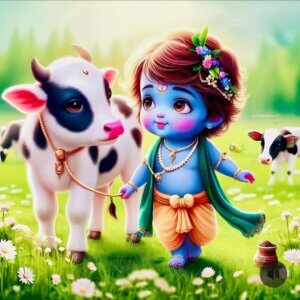
- Birth in Mathura: Krishna (10 avatar of Vishnu) was born in Mathura to King Vasudeva and Queen Devaki. His birth took place in extraordinary circumstances, with divine intervention facilitating his transfer to Gokul to protect him from the tyrannical King Kamsa, Devaki’s brother.
- Childhood in Gokul: Krishna grew up as a cowherd in Gokul, under the care of Nanda and Yashoda. His childhood is marked by various divine exploits, including defeating the serpent Kaliya, lifting Govardhana Hill to shelter the villagers from a storm, and performing playful miracles.
Adolescence and Youth:
- Life in Vrindavan: Krishna’s (10 avatar of Vishnu) adolescent years were spent in the pastoral setting of Vrindavan, where he engaged in divine play (leela) with the gopis (cowherd girls) and performed miracles, such as the Ras Leela.
- Defeat of Demons: Krishna is known for subduing and defeating various demons, including the demoness Putana, the serpent Kaliya, and the demoness Trinavarta.
Role in the Mahabharata:
- Friend and Charioteer: Krishna plays a pivotal role in the Mahabharata, serving as the charioteer for Arjuna in the great Kurukshetra War. It is in the Bhagavad Gita, a conversation between Krishna and Arjuna on the battlefield, that Krishna imparts profound spiritual teachings.
- Bhagavad Gita: The Bhagavad Gita is a key scripture in Hinduism, where Krishna discusses topics such as duty (dharma), righteousness, the nature of the self (atman), and the path to spiritual realization. The Gita emphasizes the concept of selfless action and devotion (bhakti).
Divine Teachings and Philosophy:
- Concept of Devotion: Krishna emphasizes the importance of devotion and surrender to God in various scriptures. His devotees, especially Radha and the gopis, symbolize the highest form of divine love.
- Universal Form (Vishvarupa): In the Mahabharata, Krishna reveals his cosmic form (Vishvarupa) to Arjuna, demonstrating the vastness and universality of his divine presence.
- Yogic Disciplines: Krishna discusses different paths of yoga in the Bhagavad Gita, including Karma Yoga (the path of selfless action), Bhakti Yoga (the path of devotion), Jnana Yoga (the path of knowledge), and Raja Yoga (the path of meditation).
- Departure from Earth: Krishna’s departure from the earthly realm, known as the “Brahma Muhurta,” marks the end of his physical presence. His teachings and legacy continue to inspire millions of people, and his stories are depicted in various religious texts, art, dance, and cultural traditions.
-
Buddha Avatar – The Enlightened Sage
Siddhartha Gautama, commonly known as the historical Buddha (10 avatar of Vishnu), was born in the 6th century BCE in Lumbini, present-day Nepal. Determined to comprehend the nature of human suffering, he renounced his princely life and embarked on a spiritual quest. After years of meditation and ascetic practices, he attained enlightenment under the Bodhi tree in Bodh Gaya, becoming the Buddha, or the “Awakened” One(10 avatar of Vishnu”.
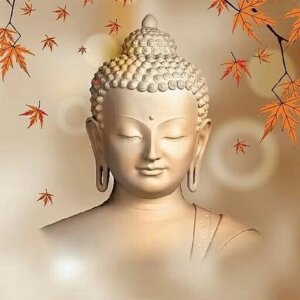
The core teachings of the Buddha, known as the Four Noble Truths, form the foundation of Buddhism. They articulate the reality of suffering (Dukkha), the origin of suffering (Tanha or craving), the cessation of suffering (Nirodha), and the path to the cessation of suffering (the Eightfold Path). The Eightfold Path encompasses ethical and mental principles, advocating right understanding, intention, speech, action, livelihood, effort, mindfulness, and concentration.
The historical Buddha’s teachings emphasize the impermanence of all things (Anicca), the concept of non-self (Anatta), and the pursuit of Nirvana, a state of liberation from the cycle of birth and death. Buddhism spread throughout Asia and evolved into various traditions, each adapting the fundamental teachings to suit cultural contexts. The historical Buddha’s profound insights into human existence and suffering continue to inspire millions, shaping Buddhism into a global spiritual and philosophical tradition.
-
Kalki Avatar – The Future Incarnation
Kalki is a future avatar of Lord Vishnu in Hindu eschatology, associated with the end times or cosmic dissolution (pralaya). The concept of Kalki is primarily found in Puranic literature, including the Puranas and the Vishnu Purana. While interpretations vary, there are common speculations regarding Kalki’s future role (10 avatar of Vishnu).
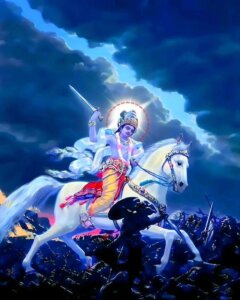
Kalki is prophesied to appear riding a white horse, wielding a sword, and bringing an end to the current age of darkness and corruption known as Kali Yuga (10 avatar of Vishnu). It is believed that Kalki will establish righteousness (dharma), eliminate evil forces, and restore cosmic balance. Some interpretations suggest a messianic figure who will lead humanity into a new era of spiritual enlightenment and ethical conduct.
Speculations also revolve around the symbolic significance of Kalki, representing the eternal cosmic cycle of creation, preservation, and dissolution. Kalki’s role is often associated with the cleansing of societal and moral decay, leading to the dawn of a new era characterized by virtue and righteousness.

